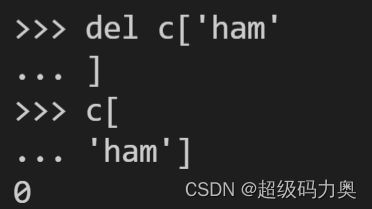Python中Counter计数器的使用
Python中Counter的使用
包:collections
collections在python官方文档中的解释是High-performance container datatypes,直接的中文翻译解释高性能容量数据类型。
其中Counter中文意思是计数器,也就是我们常用于统计的一种数据类型,在使用Counter之后可以让我们的代码更加简单易读。
统计词频的例子
#统计词频
colors = ['red', 'blue', 'red', 'green', 'blue', 'blue']
result = {}
for color in colors:
if result.get(color)==None:
result[color]=1
else:
result[color]+=1
print (result)
#{'red': 2, 'blue': 3, 'green': 1}
用Counter实现:
from collections import Counter
colors = ['red', 'blue', 'red', 'green', 'blue', 'blue']
c = Counter(colors)
print (dict(c))
传进去可迭代对象:



传进去列表:

删除元素


获得所有元素:

查看最常见出现的k个元素:
Counter('abracadabra').most_common(3)
#[('a', 5), ('r', 2), ('b', 2)]
Counter更新:
c = Counter(a=3, b=1)
d = Counter(a=1, b=2)
c + d # 相加
#Counter({'a': 4, 'b': 3})
c - d # 相减,如果小于等于0,删去
#Counter({'a': 2})
c & d # 求最小
#Counter({'a': 1, 'b': 1})
c | d # 求最大
#Counter({'a': 3, 'b': 2})